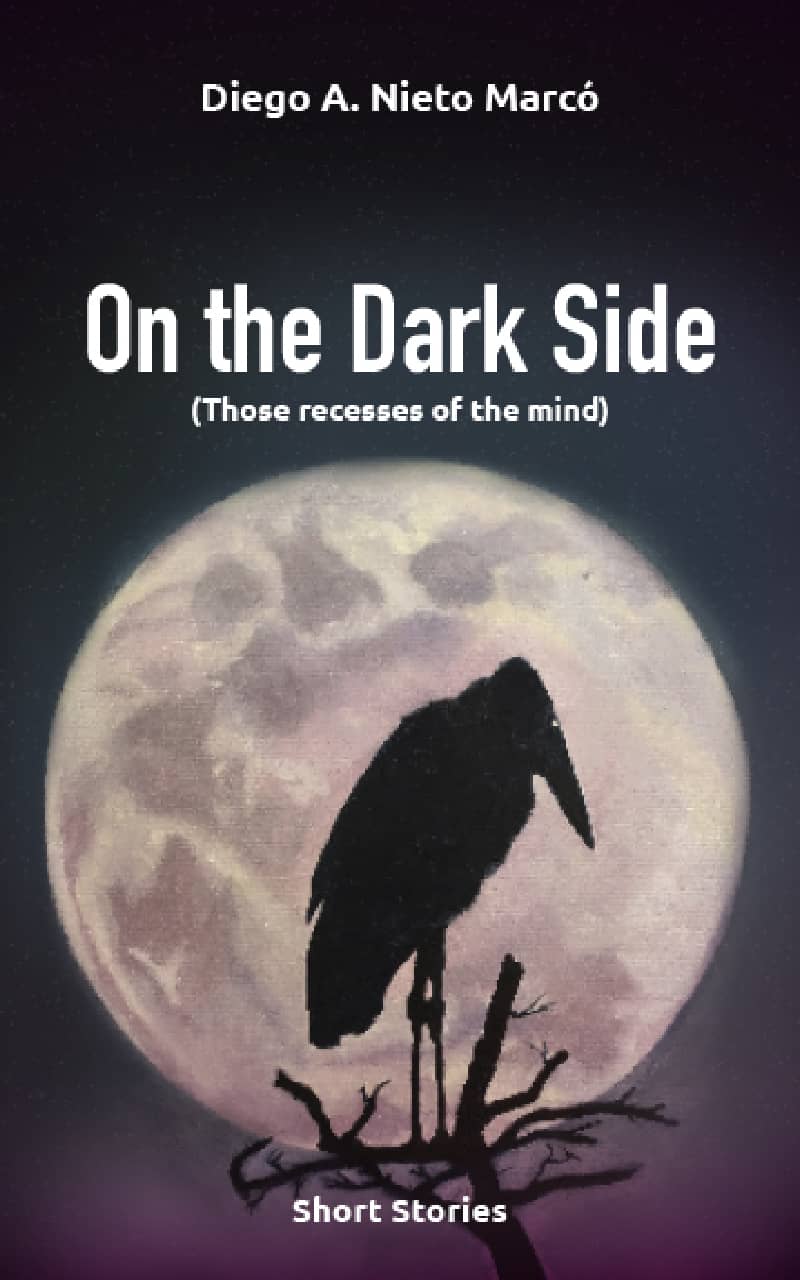… into the land of thick darkness
Hesba Stretton de Cables and cobwebs
PREFACE
On the Dark Side is comprises four stories that can be clearly framed in the genre of fiction, though not science fiction. The subjects they cover, however, are not fiction, but plain reality in the human mind. The series is opened by Isabel’s other life. Isabel, a successful, upper class young woman, has a secret to keep not only from those that make up her life but from herself. It is followed by The piano, a story about the most hidden and irrepressible ambition of a pianist and composer and the unimaginable consequences of this ambition. Sister Juana, as the title indicates, has as central character a nun and her piety, the way she lives that piety when she is forced to face worldly life. The symbolic story The drip, which closes the series, deals with the theme of remorse and what that remorse leads to in the depths of the human mind. Literature is not limited to the mastery of language and a set of techniques that resemble conjuring tricks because they are not seen but still there they are; literature extends into the more mysterious realm of the imagination, both of its maker and its reader. When their minds meet they endow a story with reality, that is, they create a world populated by people, objects, animals that can be seen, heard, and sometimes even smelt or touched; a world that can only be marvellous. I hope we meet each other through these pages.
Read more
I S A B E L’ S O T H E R L I F E
We arranged to meet at The Happy North Wind, that café near the Faculty of Philosophy, at seven o’clock; predictably, I arrived half an hour early. From the entrance, a wooden gate through a hedge, I observed the fashionable terrace, at its peak now that summer was drawing near: the white chairs and tables, the blue umbrellas, the well-kept lawn; in the background, behind an open field, a grove of trees. As usual, I was self-conscious about the place, the people, the possibility of meeting someone from the faculty. So as not to sit alone and feel everybody’s eyes on me, I decided to wait for her in the street. She had said she would wear a red dress and red high heels. She could not go unnoticed.
For a while, which to me seemed an eternity, but which I did not wish to come to an end, I slowly walked from corner to corner. (It must be taken into account that I had never waited for a woman before.) Full of hope, I can’t deny it, I noticed that the free tables were occupied, but, to my dismay, that in successive comings and goings, also others were unoccupied. There would be no excuse for a walk in the park, which was more secluded. I crossed the street to get away from the crowd and sat on the front step of a villa, which is not my habit.
Three girls came out of The Happy North Wind; they were laughing and looking in my direction. I was beginning to think I might be putting on a show when, turning the corner, about fifty meters away, there appeared a slender figure in red that became more and more of a woman as she advanced. It was the end of the waiting and the beginning of shyness.
The skirt was short, I mean short, and tight to the body, I couldn’t help noticing, and she strutted like a model, her shoulder-length hair swaying in harmony. As she came closer

